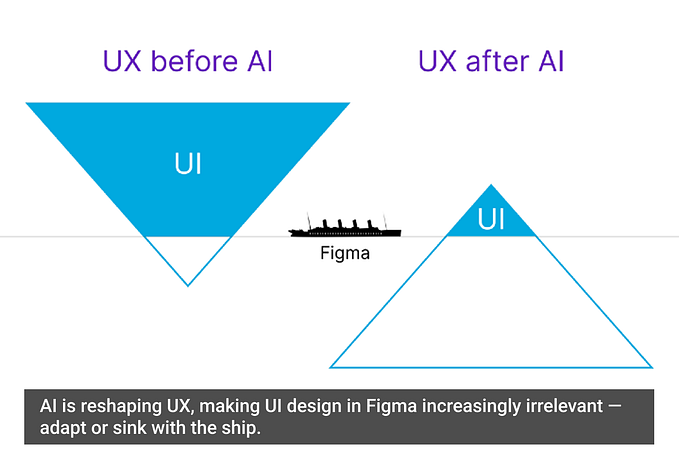Resigns and gains, how the negotiation works in UX teams
Some recommendations to consider when approaching hard conversations from UX teams.

A few weeks ago, I was part of an incredible live session whose main goal was to broaden knowledge to an emerging product managers community in Latin America, of which I was delighted to be part and add some insights from my design background. The main point to develop in this conversation was the strategic exercise behind building a new product. Even though this topic seemed too extensive to be covered in a one-hour session, it still sparked some exciting ideas and reflections. Throughout the conversation, at some point, the host brought up some comments that made me think about an almost invisible skill; negotiation and how it works in teams, and most importantly, how it works in UX environments when we seek to build a new product.
The first thing that came to mind when discussing the negotiation concept is that many experts and best-sellers books across the internet can explain the idea way better than I do. So I started looking for some definitions by surfing the net. Here’s one of the many: “The term negotiation refers to a strategic discussion that resolves an issue in a way both parties find acceptable. In a negotiation, each party tries to persuade the other to agree with their point of view” by Rajeev Dhir in his article “Negotiation: Definition, How It Works, and Why It’s Important.” All over the internet, this definition varies by adding or subtracting some parts, but in summary, this is basically what a negotiation is and its outcome.
After this conversation, I decided to think more carefully about how this skill affects our design profession, especially in searching for results and managing people.
To begin with this reflection, as designers, we are not entirely familiar with standing for ideas or scenarios beyond the design frontier; that’s ok to a certain level (in my opinion), but in terms of evolving as designers and following a management path, not only results are critical to run a team properly, we must also accomplish cooperative agreements to achieve positive numbers under the best possible conditions.
A negotiation results from handling several pieces of knowledge toward a goal, persuading someone (as mentioned above), or standing for something. In UX design, we can refer to several sources of information in familiar places to negotiate something, such as the business expectations, installed capacity, level of uncertainty, level of design, and others to use in future negotiation stages properly.
How to negotiate in design?

Negotiating something without arguments is less than practical, so you must gather information, whether numbers or another source because having a solid foundation for your ideas is essential. You should know certain information before persuading anyone at work. Then, depending on the goal we want to achieve, we should cover a considerable extension of knowledge or go straight to the point.
Here is my recommendation for approaching a good design negotiation from top to bottom in UX teams. The image illustrates some suggestions/questions to consider when going through a good negotiation (based on my experience); some points are mandatory, and another is desirable, but ultimately, it’s up to you.

Remember the business’s vision (desirable).
Although it may seem too far sometimes, the reality is that this information is pure gold, and often we overlook it. In negotiations, recalling business goals can guide the parties and clarify substantive doubts that help make the objectives more visible. A simple question can help to delimit expectations; What’s the bet this year? This quarter? Or even this sprint? (Defining a purpose before solving anything) Sometimes, we focus on a single problem and must first understand the business meaning behind all the tasks.
A quick tip: If you see negotiation going sideways, make a hard stop and bring back all the initial goals before proceeding to solve all the challenges. Sometimes, aligning expectations before executing is healthier than reorganizing efforts without time.
Acknowledge the money issue (desirable).
Some negotiations are far more complicated than others, especially if you are a manager o leads a large group of people. When people say “money talks,” it is because it does, and there’s nothing more delicate than the economics of a business. Sometimes we need to deal with some nice-to-have request that seems essential, but when we do the math (costs over benefits), we realize that we must put our money into what matters.
As you may know, there are some tough decisions around money, such as hiring people or contracting services; those are arguments strong enough to lead a negotiation in your favor or to suggest new approaches.
A quick tip: UX design is also about money and effectiveness. When in a negotiation, especially with some big fish, having a clear idea of the impact of the funds will trigger more answers for you and a better perspective of what to do to accomplish the goal.
Acknowledge business expectations (mandatory).
Understanding the project appetite will show you some straightforward steps to proceed. Next, you can decide how to move your pieces based on the task’s ambition. Here, the key is to measure the dimension of the challenge vs. your available resources and time.
A quick tip: Refrain from rushing into solutions before fully understanding how big the business expectation is. It is a common mistake to overlook this step and, eventually, make some hard decisions on the fly to survive the challenge; this is no longer a good strategy for your team.
Acknowledge the installed capacity (mandatory).
Whatever you’re negotiating, please ask: Do we have enough time? Do we have the human capacity? Is it feasible in a given time? Not knowing these answers can trigger stress and rework for your team.
The success of complying with optimal design solutions lies in how much you can cover with your team. On the other hand, trying to cover a lot with little is generally a formula for disaster because, eventually, you will have to burden your team with many responsibilities, generating a great deal of stress and frustration.
A quick tip: Make sure to get an adequate balance in two axes: time over capacity. Short timeframe = whole team capacity / Long timeframe = small team capacity.
Measure the level of uncertainty (mandatory).
Even though you know your capacity to accept challenges and the project dimension, how much do you know about it? Do we have the proper answers and information to proceed? The level of uncertainty is a big deal, and we must decide not to burn out our team or be too relaxed. You can make or propose action items in a negotiation according to the level of uncertainty you may find within the project.
A quick tip: Do not assume things; always be prepared for worst-case scenarios. Prepare your team with a healthy sense of urgency to be responsive enough to whatever they may find in the way.
Levels of designs (mandatory).
It is essential to understand how much fidelity our designs will have; it is different from sketching something quickly rather than developing a high-fidelity mockup or prototype. Both deliverables take time, and depending on the available project timeframe, we must provide solutions; it is a matter of the effort needed to move forward as expected.
A quick tip: In negotiations, this can be an intelligent and agile move; persuading someone to take quick ideas to solve something will give you time to move better in a tight timeframe. In such a way, we can concentrate our energy on solving other problems.
Develop answers or scenarios (mandatory).
The perfect end of a negotiation is to agree on things, but this can only happen if we develop answers or at least steps to follow. Therefore, we must point out some scenarios we may face due to the negotiation and treat them as project agreements. With this part, the effort will be worthwhile.
A quick tip: Be prepared with this argument of your negotiation; once you propose something, consider how this will affect the project or collaborators. This notion of the answer will give some advantages to the negotiation agreement.
Finally, resign to something, but gain another.
As with every negotiation, things will only sometimes be as expected; often, we must give up on things we need or consider crucial for the team. As a leader, ensure that the agreed terms are favorable for the sake of the project. If a negotiation goes well, then it is a win-win.
An extra perk: the anticipation
Negotiations should only sometimes be responsive actions; instead, we can make some moves to prevent negotiating under high-stress conditions. “The attack is the best defense,” I think it makes total sense in these situations. A long time ago, I learned anticipation could give you some strategic advantage over others; here are some ways to see these perks.
Uncovering new opportunities (the key to the extra miles)
Sometimes, many non-required tasks are crucial to conquering new territories. Anticipating spotting unique needs and solutions within the product will give you the ownership to lead new initiatives and turn the spotlight on you. Try to understand your context and how to trigger a broader impact from your field of action.
Reducing damage (control the situation)
Anticipating communicating or executing preventive actions in a project (good planning, dimension of the problem, capacity, etc.) is critical to mitigating possible negative impacts. Accompanied by good communication, issues will be more friendly to attack and less urgent and stressful.
As with other experiences, this is only one of the many #ShortStoriesOfMyLifeAsDesigner
…………………………………………………………………………………………………
To write this article, I want to credit all the fantastic information sources and other authors who have had the exact reflection as me, all from another exciting perspective.






